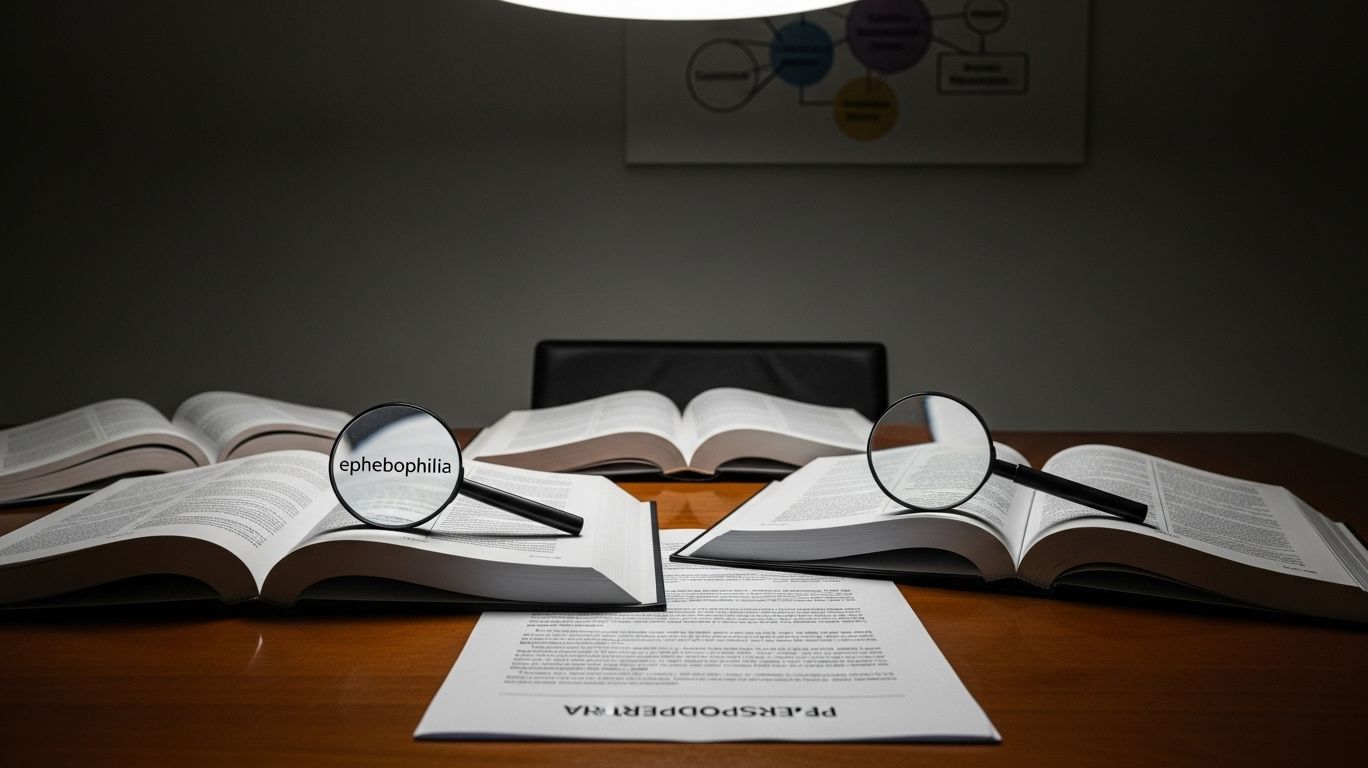
Have you ever encountered the term ephebophilia online or in an article and wondered what it actually means? It’s a word that pops up in psychology, culture, and even debates about law—but it’s also often misused or misunderstood. Because it deals with sensitive topics like age, sexuality, and legality, getting the definition right really matters.
This article explains ephebophilia, how it differs from similar terms, and why using it correctly is important for clear, respectful conversations.

At its core, ephebophilia refers to an adult’s consistent or primary sexual interest in mid-to-late adolescents, usually ages 15 to 19. This is more than just noticing that a teenager might be attractive—many adults recognize beauty across age ranges. Instead, ephebophilia implies a stronger, ongoing preference for this specific stage of development.
An important distinction is that ephebophilia is not a mental disorder. Unlike conditions such as pedophilic disorder, it does not appear in the DSM. Instead, it functions as a descriptive concept used mainly in research and academic writing. Psychologists and sexologists apply it when studying chronophilias—age-based patterns of sexual preference.
That said, the term carries significant cultural and ethical weight. Adolescents may be physically mature but are often legally considered minors, depending on the jurisdiction. This creates a complex overlap between biology, psychology, and law, making careful use of the term especially important.
One reason ephebophilia causes so much confusion is its close association with pedophilia in public discourse. However, in professional contexts, these terms describe different age groups:
These categories fall under the umbrella of chronophilias, a framework for describing sexual preferences by age group.
Why does this distinction matter? Because lumping all these terms together blurs important differences. Pedophilia involves attraction to children who are not biologically mature, while ephebophilia focuses on adolescents who have gone through puberty. In most societies, this distinction is significant both culturally and legally. Mislabeling someone with one term when another applies can create unnecessary stigma, misinformation, or fear.
The word comes from Greek:
It first appeared in 1896 in Georges Saint-Paul’s Tares et Poisons: Perversion et Perversité Sexuelles and later gained attention through sexologists like Magnus Hirschfeld. Today, researchers such as Ray Blanchard have revisited the term as part of a clearer framework for understanding chronophilias (age-based sexual preferences).
Because ephebophilia is so often sensationalized, having clear definitions helps keep discussions respectful and accurate. Misunderstanding the term can blur lines between legal, cultural, and psychological concepts—leading to stigma or misinformation.
Being precise about what ephebophilia means helps:

Ephebophilia is simply a descriptive term researchers use to talk about attraction to mid-to-late adolescents. It’s not a mental disorder, but it’s a concept that needs to be handled carefully because of its social and legal implications.
At girlfriend.ai, we believe in creating safe, thoughtful spaces for learning about psychology, sexuality, and relationships. If you want to learn more topics like this in a respectful and educational way, visit us and keep the conversation going.
No—ephebophilia is not a crime by itself. It’s just a term researchers use to describe a pattern of attraction. The legal issues arise when actions involve individuals who are under the age of consent.
Age of consent laws vary by country (and sometimes by state or province), but many set the minimum legal age at 16, 17, or 18. Engaging in sexual activity with someone below that legal threshold can result in serious legal consequences, including statutory rape charges. That’s why understanding the difference between an academic concept and legal behavior is so important.
These terms describe different age groups:
The key difference is biological maturity. Adolescents are typically past puberty, but many are still legally minors—meaning society treats them differently under the law. Mixing these terms up can create confusion and sometimes unfair stigma.
No. Ephebophilia does not appear in the DSM and isn’t considered a psychiatric diagnosis. It’s part of a research framework called chronophilias, which groups different age-related preferences for study purposes.
This classification helps researchers study human sexuality more clearly but does not imply that people with this preference have a mental illness—unless their behavior causes harm or breaks laws.
Studying ephebophilia (and other chronophilias) gives psychologists and sociologists a way to talk about human sexuality more precisely. Clear categories help:
By using accurate terms, professionals can discuss sensitive topics responsibly and promote informed public dialogue.
Because it deals with attraction to people under 18, ephebophilia sparks debates around morality, legality, and exploitation. Some see the term as “normalizing” behavior that society considers harmful, while others argue that having a precise term helps protect minors by drawing clearer boundaries.
Responsible use of the word means acknowledging both its academic value and the real-world laws designed to safeguard young people.
